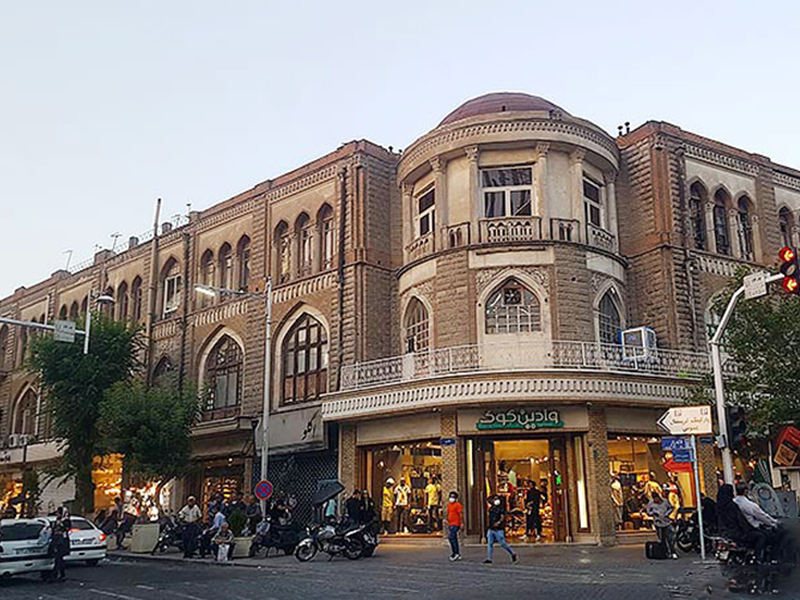You may have never seen Lalehzar to Lolagar Alley. Perhaps you are not from Tehran, Iran’s capital, and have never had the chance to visit this city. However, none of these reasons should prevent you from acknowledging or appreciating the beauty of this city. Tehran, the capital of Iran, represents the entirety of Iran with its rich history and astonishing past. Today, Tehran may not resemble its old self in most parts, but we are here to take a journey through its historic streets and experience an enchanting tour of Tehran together. So in this article from Eligasht, we will embark on a journey through the narrow alleys and bustling markets of Old Tehran, specifically exploring the captivating Lalehzar and Lolagar Alley.
Book Iran Air flights from London to Tehran and Tehran to London with Eligasht UK

Lalehzar to Lolagar Alley may not encompass all of old Tehran, but it undoubtedly holds a significant historical background. This area, with its shops, alleys, old houses, and the locals who still reside among them, is one of the main arteries of the capital. If you are seeking to witness the culture and embrace the ancient and original traditions of Tehran, this article is for you. Your presence, regardless of your age, is welcomed on this journey. Just make sure to have a cup of scorching-hot tea by your side, so if you become tired during your exploration of Tehran, you can reminisce about the old coffee houses and treat yourself to a cup of Iranian tea.
Lolagar and a complete symmetry experience from Lalezar to Lolagar
Lolagar Alley is one of the old alleys of Tehran, where even the houses are reminiscent of the past and have attractive and unbelievable architecture. As you enter this street, the first thing that catches your eye is the presence of buildings that are the same on both sides of the street, like mirrors facing each other. These houses, in every detail including doors, windows, balconies, and all the intricacies and protrusions of the structure, are the same. There is not a single difference, not even in the smallest details!
Alongside these beauties, the people of this street, just like the buildings, are authentic and, kind-hearted and friendly. It’s interesting to note that these well-preserved old buildings, thanks to the presence of their kind owners, have managed to stand strong and resilient.
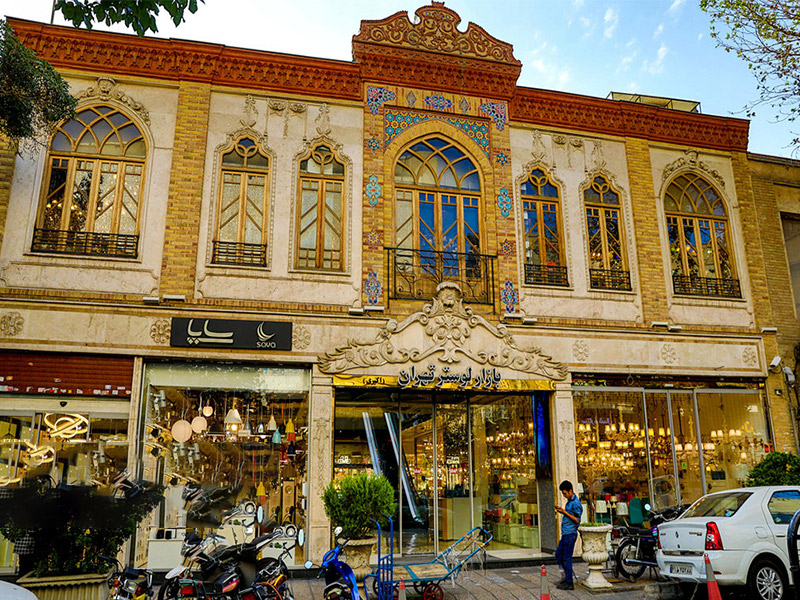
Lolagar Alley and the Story of its Formation
Continuing our journey to Lolagar Alley, let us now share an intriguing story about the architectural harmony of this street. This story is worth telling and adds to the charm of the buildings in this area.
The entire story of architectural harmony in Lolagar Alley dates back to 1938. The Lolagar family, an ancient and prominent family, decided to purchase properties on both sides of this alley and build identical houses. The result of this decision is the existence of today’s Lolagar alley, which, after many years, still stands as one of the most remarkable and attractive streets and neighborhoods in the capital.
An interesting fact is that Lolagar Alley, which is considered one of the best old neighborhoods in Tehran, is now registered as a national heritage site in Iran. The main attraction of this place, which is the architectural harmony of the houses on both sides of the street, has made it one of the most visited streets and neighborhoods in Tehran.
Join us further as we explore the sightseeing of Lolagar Alley:
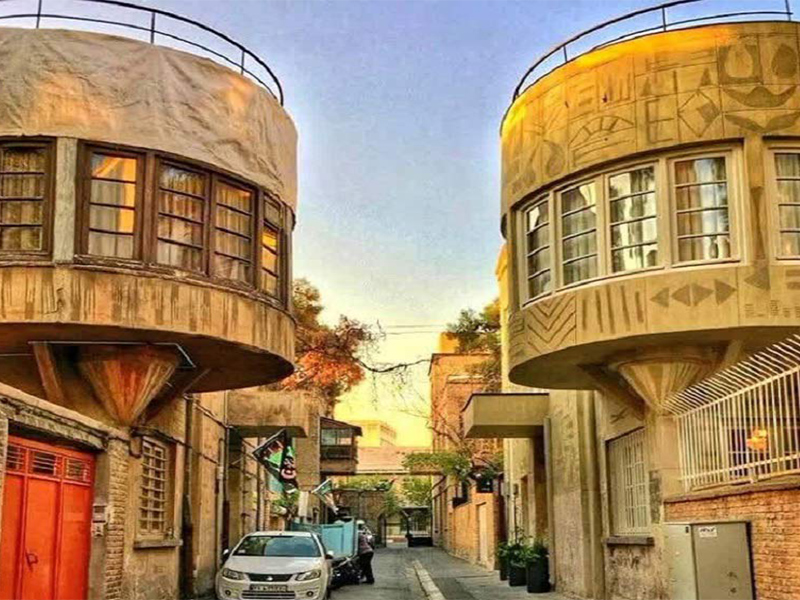
Davood’s Old Pizza Shop From Lalehzar to Lolagar Alley
In the Lolagar neighborhood, as you walk, the first space and shop that catches your attention is Dawood’s Pizza Shop located at the end of the alley. This eatery offers delicious and nostalgic pizzas. Despite Dawood’s death, this shop is still standing . We recommend that even if you’re not feeling hungry while exploring the Lolagar neighborhood, treat yourself to a traditional and enticing pizza at Davood’s.
A Memorable Café: Café Rira
After enjoying a delicious pizza at Davood’s, we suggest you visit Café Rira and treat yourself to a cup of mouthwatering Iranian coffee or tea. This café is also among the most beautiful historical attractions in the Lolagar Alley of Tehran. It’s worth noting that this café is housed in a very old and traditional building with historic Tehran-style architecture, belonging to the descendants of Lolagar residents. They have now returned from Europe and continue their activities by running Café Rira in this building.
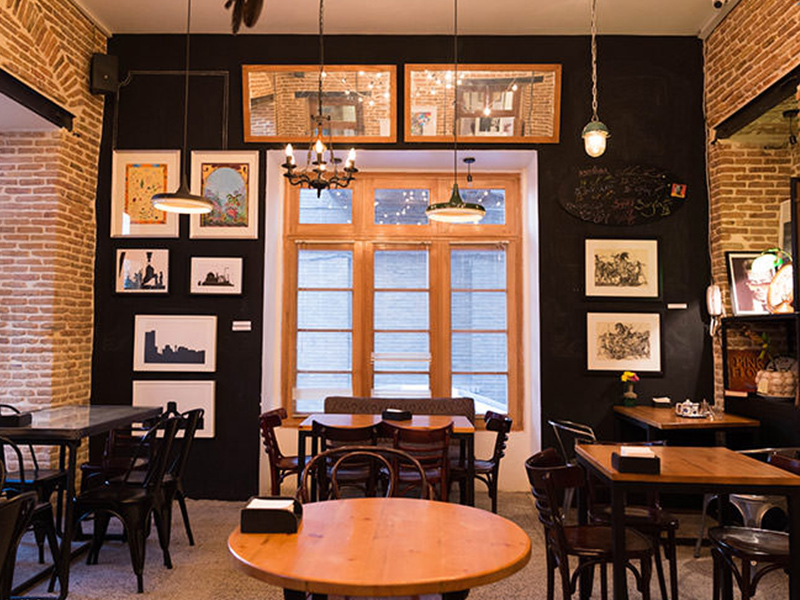
Exploring Golestan Palace and the Old Bazaar of Tehran
Continuing your journey towards Lalehzar, you venture out of Lolagar and reach the old and historical bazaar of Tehran. This bazaar is considered one of the main architectural landmarks of the capital. An interesting fact you may not know is that the old bazaar, beautiful, historical, and large, attracts many domestic and foreign tourists annually who enter solely to admire the market’s structure. Other notable attractions in this area include Golestan Palace and the School of Fine Arts or Darolfonoon School.
Darolfonoon school
The first attraction in this neighborhood is Darolfonoon School, which is a highly popular building. Amir Kabir established this school on Nasser Khosrow Street between 1807 and 1852. The Darolfonoon school is the first major educational institution in Iran that was built in the country. After Amir Kabir’s trip to Russia, he realized that Iran needed a modern and up-to-date educational institution. Interestingly, in the past, the School of Fine Arts was called the “New School” or the “Royal Academy,” and its building was previously a barracks before the school was established.
Continuing with the journey, Amir Kabir, a renowned scholar and professor, brought with him seven scholars from Austria to this school to take charge of educating individuals. Interestingly, these two individuals arrived in Iran exactly two days after Amir Kabir was dismissed from the ministry. It is worth mentioning that the School of Fine Arts was inaugurated precisely 13 days before Amir Kabir’s assassination by Nasser al-Din Shah, with only 30 students.
Golestan Palace
Continuing our journey from Lalehzar to Lolagar (although we started from Lolagar to reach Lalehzar), we will also visit Golestan Palace. This palace was built by Nasser al-Din Shah in 1268 AH (1851-1852 CE). It is a harmonious blend of traditional Iranian architecture, handicrafts, and Western architectural influences. The building of this palace is considered one of the oldest structures in the capital, and it was the residence of the Qajar family.
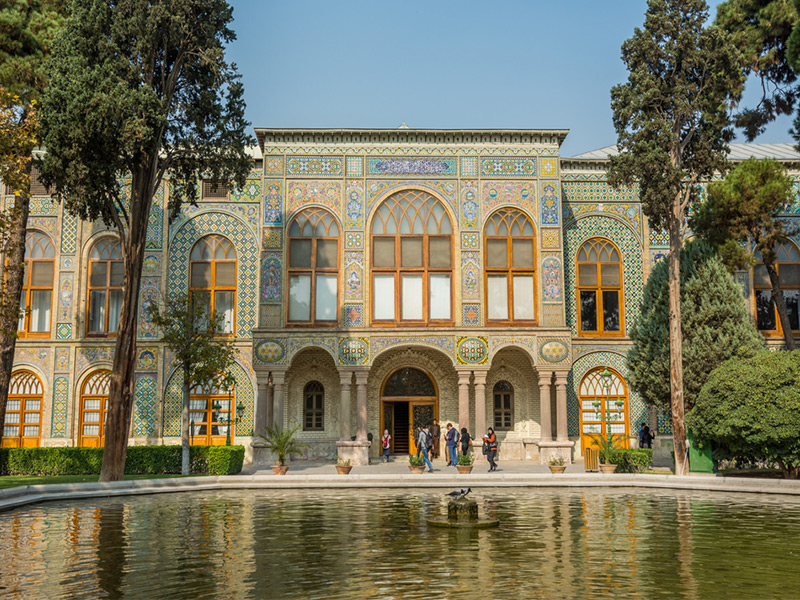
In other words, in 1779, when the Qajar dynasty came to power and chose Tehran as its capital. To fully explore this magnificent palace, you need at least one to two full days to see, touch, and remember every nook and cranny. The museums, gardens, rooms, halls, corridors, and even the doors and windows all belong to the Qajar era. Every corner of this palace precisely transports you to the Qajar era, providing a living and historical journey to the heart of Iran during that time.
Lalehzar, our destination on the path from Lalehzar to Lolagar
At the end of our journey, we have now arrived at Lalehzar. Lalehzar is one of the most important and fascinating old neighborhoods of Tehran that instantly reminds you of old movies like “The English Bag,” “In the Eye of the Wind,” and “A Thousand Hands.” The shops in Lalehzar all belong to the Qajar and Pahlavi eras, symbolizing modernity and modernism in their time. Nasser al-Din Shah built this street after his first trip to Paris and intended to make it similar to the Champs-Élysées.
Architectural Marvels
Walking along Lalehzar, one can’t help but be mesmerized by the stunning architecture that lines the street. The buildings showcase a unique blend of traditional Persian and European architectural styles, reflecting the influence of various cultures on the city. From ornate facades to intricate detailing, these structures are a testament to the craftsmanship of the past.
Cultural Significance
Lalehzar has long been a center of cultural and intellectual activities in Tehran. It was home to numerous theaters, cinemas, and cafes, where artists, poets, and intellectuals would gather to exchange ideas and showcase their talents. The street has witnessed the birth of some of Iran’s most renowned literary and artistic movements.
Continuing our steps in Lalehzar, we will visit the buildings and attractions in this area.
The Luxurious Grand Hotel
The first building we encounter is the Grand Hotel, which you have seen in old Iranian movies with its iconic entrance featuring the same name. It is a historic hotel that covers an area of approximately 1,300 square meters and was built by a Caucasian immigrant named Baqer Khan. This hotel followed a precise and accurate imitation of modern and up-to-date European luxury hotel practices in hosting its guests.
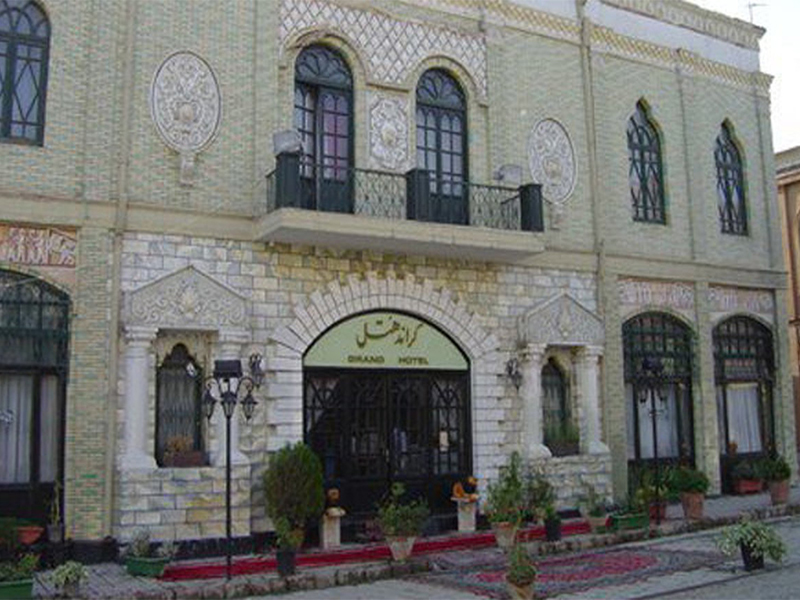
The Magnificent Shams Ol-Emareh Building
The Shams ol-Emareh Building is another splendid historical mansion of the Qajar era that, like other buildings, was not constructed by replicating European architectural styles. Shams ol-Emareh is located in the western part of Lalehzar, on Nasser Khosrow Street. The building dates back to 1284 AH (1867-1868 CE) and was designed and executed by Austrian and French architects. Even seeing images of this building convinces you that you are facing a very special, unique, and extraordinary structure in the capital of Iran.
The Old Moulin Rouge Caravanserai
In the rest of our journey from Lalehzar to Lolagar, we arrive at an old caravanserai located in the neighborhood of Lalehzar or Shemshad. Visiting this caravanserai will be a delightful experience. To reach this caravanserai, you first need to go to Lalehzar and then make your way to South Ferdowsi Street. Now, right in front of Colonel Sakha’i Street on Melli Alley, you will see the building of this caravanserai.
Exploring Old Tehran: Practical Tips
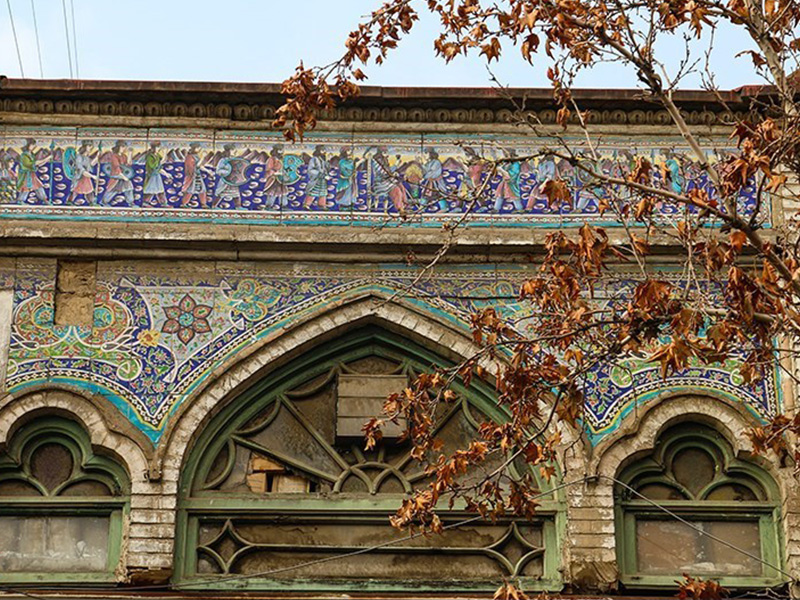
Best Time to Visit
The best time to explore Old Tehran, including Lalehzar and Lolagar Alley, is during the spring and fall seasons when the weather is pleasant. The scorching summer heat can make walking through the narrow alleys uncomfortable, while the winter months can be quite chilly.
Getting Around
Old Tehran is best explored on foot. The narrow streets and alleys are not suitable for vehicles, and walking allows you to fully immerse yourself in the ambiance of the area. However, if you prefer alternative modes of transportation, taxis, and ride-sharing services are available in Tehran and can take you to the vicinity of Old Tehran.
Lalehzar to Lolagar or Lolagar to Lalehzar!
Old Tehran, with its enchanting streets and architectural wonders offers a unique experience for those seeking to immerse themselves in the history and culture of the city. Lalehzar and Lolagar Alley are just two examples of the hidden treasures that await in Old Tehran. walked shoulder to shoulder from Lalehzar to Lolagar or Lolagar to Lalehzar.
We got a little tired and hungry went to Davood’s Pizza, and we can still taste the delicious flavor of their pizza in our mouths. Café Rira was also a memorable place for a cup of traditional Persian tea with sugar cubes. After that, when we left Lolagar, we went to Tehran Bazaar, and finally, we reached Lalehzar.
We are time travelers, and we will forever cherish and record all the places we walked together on foot in our memories. We will always keep these memories as the best memories of exploring Tehran in old Tehran and revisit them in moments of nostalgia.
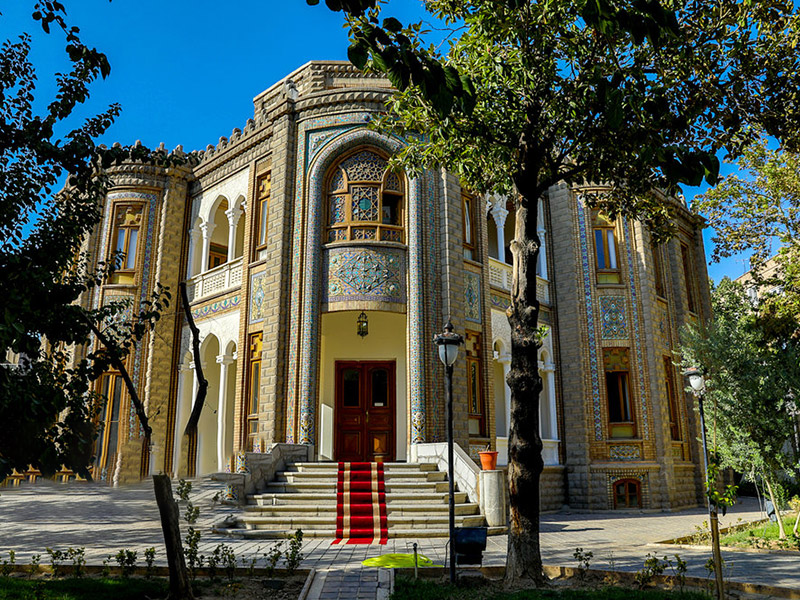
Frequently asked questions
1- What is the significance of Lolagar Alley?
Lolagar Alley, located in Lalehzar, is a historic and charming alley that holds cultural and architectural value. It is known for traditional architecture, narrow lanes, and old houses that provide a glimpse into the past. Many visitors enjoy exploring the alley to experience the authentic atmosphere of old Tehran.
2- Are there any notable landmarks or attractions near Lalehzar Street?
Yes, there are several notable landmarks near Lalehzar Street. Some of them include the Grand Hotel, Shams ol-Emareh Building, and Golestan Palace. These historic sites reflect the architectural beauty of the Qajar era and offer insights into Iran’s rich cultural heritage.
3- Is Lalehzar Street a pedestrian-friendly area?
Yes, Lalehzar Street is pedestrian-friendly. It is a lively and bustling street where pedestrians can stroll around, explore the shops, and enjoy the ambiance. However, it’s important to be mindful of the traffic and follow pedestrian rules while walking along the street.
